Best 5 MIG Welders: From Budget-Friendly to Premium Picks
- December 28, 2023
- 0 comment
In my capacity as a seasoned welder, I frequently find myself sought after for guidance on selecting the most suitable MIG welder. Recognizing the diverse financial constraints and specific requirements that individuals may have, I dedicated extensive time to curating a comprehensive list comprising the seven most commendable MIG welders presently in the market. Thoroughly delving into the intricacies of each model, I conducted exhaustive research and rigorous testing to ascertain their capability to meet the demands of various welding tasks.
We’ve got your welding covered! Find comfy, Best welding gloves, Best welding carts, plus top picks for Best TIG Welder & Best ARC Welders – all without breaking the bank!

This compilation caters to a broad spectrum of preferences, spanning from cost-effective choices that accommodate limited budgets to high-end models equipped with cutting-edge features. Whether one is seeking an entry-level MIG welder for basic applications or a sophisticated unit capable of handling complex welding projects, this meticulously curated list aims to provide a nuanced overview of options, ensuring that there is a fitting choice for every individual within the realm of MIG welding.
The Top 5 MIG Welders List:
- Lincoln POWER MIG 210 MP
- Hobart Handler 190 MIG Welder
- Millermatic 255 MIG
- Forney Easy Weld 140 FC-I Welder
- YESWELDER Digital MIG-205DS MIG Welder
Guide for Buyers: What to Anticipate from a MIG Welder Priced Below $300
If you’re in the market for an affordable yet versatile welding solution, consider the MIG welders available in the sub-$300 price range. These machines are particularly well-suited for beginners, offering a cost-effective entry point into welding capabilities.
Typically weighing less than 40 pounds, these MIG welders are not only budget-friendly but also highly portable, ensuring that you have a convenient tool ready for minor repairs and welding projects at any time.
Forget about makeshift solutions involving screws, duct tape, or quick-fix epoxy. With a MIG welder in hand, you can swiftly and permanently repair a variety of items, from broken fence gates to lawn mower decks. The welder allows you to reinforce the repaired areas, ensuring a durability that surpasses the original condition.
Once you’ve addressed all your maintenance tasks, these MIG welders open up opportunities for creative projects and improvements around your home. Experiment with crafting decorative artwork using scrap or unconventional metal pieces, or venture into the realm of designing functional and visually appealing furniture.
For those utilizing the MIG welder for home projects or hobbies, the completion of just one or two straightforward assignments can easily justify the modest investment in a basic MIG welder within this price range. In essence, these affordable machines not only serve as practical problem-solvers but also as gateways to a world of DIY possibilities.
1. Lincoln POWER MIG 210 MP
Technical Specifications
- Functions: MIG, stick, TIG, and flux-core welding
- Weight: 40 lbs
- Material Thickness: Up to 5/16″ mild steel; up to 3/16″ stainless steel or aluminum
- Duty Cycle: 25%
- Weldable Materials: Mild steel, stainless steel, aluminum
- Input Voltage: 110V and 220V
- Warranty: 3-year factory warranty
The Lincoln Electric POWER MIG 210 MP stands out as an exceptionally versatile welding machine with four distinct functions: MIG, stick, TIG, and flux-core (Gasless MIG) welding. This wide array of capabilities makes it suitable for a diverse range of welding projects.
With the ability to weld stainless steel or aluminum up to 5/16 inches thick, the POWER MIG 210 MP offers impressive performance. Despite its robust features, the machine is remarkably lightweight, weighing only 40 pounds, and it accommodates both 110V and 220V input voltages.
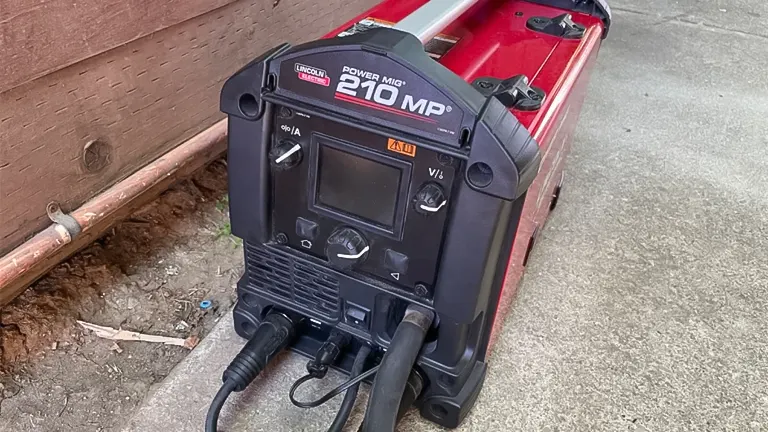
Lincoln Electric backs this welding powerhouse with a reliable three-year factory warranty, providing users with confidence in its durability. Personally owning the 210 MP since 2019, I can attest to its reliability and durability. It has become my go-to MIG welder, showcasing a sturdy construction with sheet metal and an all-metal wire drive.
Designed with versatility in mind, this welding machine caters to various user needs. It is ideal for small contractors, hobbyists, and educators due to its user-friendly setup and operation. The comprehensive package includes essential components like a MIG gun, regulator, stick clamp, and ground clamp.
For those seeking to elevate their welding capabilities, optional accessories such as a spool gun, TIG gun, and foot pedal are available. The 210 MP has garnered positive feedback from users, boasting a 4.8 out of 5 rating on Amazon. Impressively, 86% of customers awarded it a 5-star review. Highlighted by testimonials like this, who praises its compactness and ease of use, the POWER MIG 210 MP has proven itself in a variety of projects, from lock racks to fire pits and even BBQs.
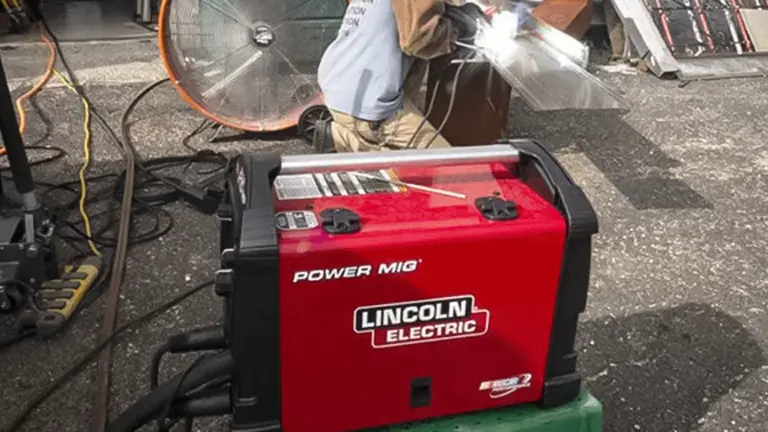
As a welder, I highly recommend the Lincoln Electric Power MIG 210 MP for its exceptional qualities. Its lightweight and compact design facilitates easy mobility within my workshop or for on-the-go assignments. The machine’s color screen is impressive, and the user interface is intuitive, simplifying the setup process. The re-programmed settings enhance ease of use, making it accessible even for beginners.
Over the course of numerous projects, the 210 MP has consistently delivered excellent performance and reliable results. It has become my preferred choice for welding tasks.
Furthermore, Lincoln Electric provides outstanding after-sales support, ensuring a seamless experience when purchasing spare or replacement parts. Despite its current price of $2,529 on Amazon, the 210 MP stands out as my top recommendation for the best overall MIG welder. While it may not be the most budget-friendly option, its unparalleled performance and durability make it a worthwhile investment for professionals and enthusiasts alike.
| Pros | Cons |
|---|---|
| – Versatile: Four welding functions – MIG, stick, TIG, and flux-core. | – Premium Price: Priced at $2,529 on Amazon, it may be considered expensive. |
| – Lightweight and Compact: Easy to move around the workshop or transport for outdoor jobs. | – Power Limitations: Limited to a 25% duty cycle, which may be a constraint for extended welding sessions. |
| – User-Friendly: Intuitive interface with a color screen and re-programmed settings for easy setup. | |
| – Reliable Performance: Suitable for a wide range of welding tasks with consistent and pleasing results. | |
| – Excellent After-Sales Support: Lincoln Electric provides top-notch service and readily available spare/replacement parts. | |
| – Durable: Built to last, making it a long-term investment. |
2. Hobart Handler 190 MIG Welder
Technical Specifications
- Functions: MIG and flux-core welding
- Weight: 68 pounds
- Material Thickness: Up to 5/16 inches, max.
- Duty cycle: 30%
- Weldable materials: Steel, stainless steel, aluminum
- Amperage range: 15-190 amps
- Input voltage: 230V
- Warranty: Five-year limited warranty
The Hobart 500554 Handler 190 MIG Welder 230V claims the second spot on my list of best MIG welders for its exceptional value. Operating on a robust 230-volt circuit, it outshines competitors with its power, resulting in clean welds. Priced attractively at $804.06 on Amazon, it offers the best value in the market.
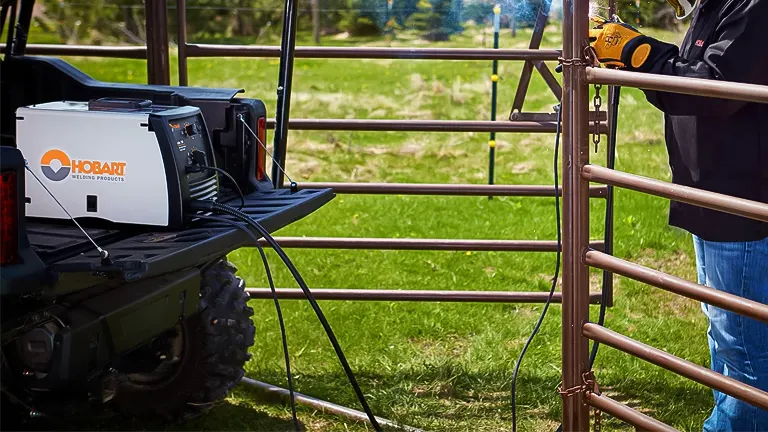
The Handler 190 is versatile, accommodating MIG and flux-core welding for materials up to 5/16 inches thick. Weighing only 68 pounds, it’s easy to maneuver, and the five-year limited warranty adds to its appeal. Released in 2011, it comes with essential accessories, making it user-friendly for different wires, gases, and thicknesses.
With seven pre-set voltages and infinite wire feed speed control, achieving clean welds with minimal spatter is effortless. The overload protection ensures smooth transitions between materials. Amazon reviews boast a 4.8 out of 5 rating, with 90% of users giving it 5 stars. My personal testing, detailed on HappyWelderHQ, confirms its excellence, making it a top choice for beginners or hobbyists seeking an affordable, reliable MIG welder.
| Pros | Cons |
|---|---|
| – Great Value: Priced at $804.06, excellent value | – Limited Duty Cycle: 30% duty cycle, not ideal for continuous heavy-duty welding |
| – Powerful Performance: 230-volt circuit, robust power for precise welds | – Flux-Cored Wire Limitation: Supports flux-core welding, but limited options for specific applications |
| – Versatility: Capable of MIG and flux-core welding, accommodates materials up to 5/16 inches thick | |
| – User-Friendly: Lightweight at 68 pounds, easy setup, seven pre-set voltages | |
| – Reliability: Backed by a five-year limited warranty, assurance of durability |
3. Millermatic 255 MIG
Technical Specifications
- Functions: MIG, Pulsed MIG and flux-core welding.
- Weight: 84 pounds
- Material Thickness: 18 ga. – 1/2 inch aluminum, 24 ga. – 0 1.2 inch mild steel.
- Duty cycle: 60%
- Weldable materials: Steel, stainless steel, aluminum
- Amperage range: 20-350 amps
- Input voltage: 208V-240V
- Warranty: Three years
The Miller 951766 Millermatic 255 claims the third spot on my list of top MIG welders, priced at $4,789. Ideal for high-end welding, it supports MIG, Pulsed MIG, and flux-core techniques. With a 60% duty cycle, it handles materials like steel, stainless steel, and aluminum (18 ga. – 1/2 inch for aluminum, 24 ga. – 0.12 inch for mild steel). Operating at 20-350 amps and 208V-240V, it weighs 84 pounds and comes with a three-year warranty.
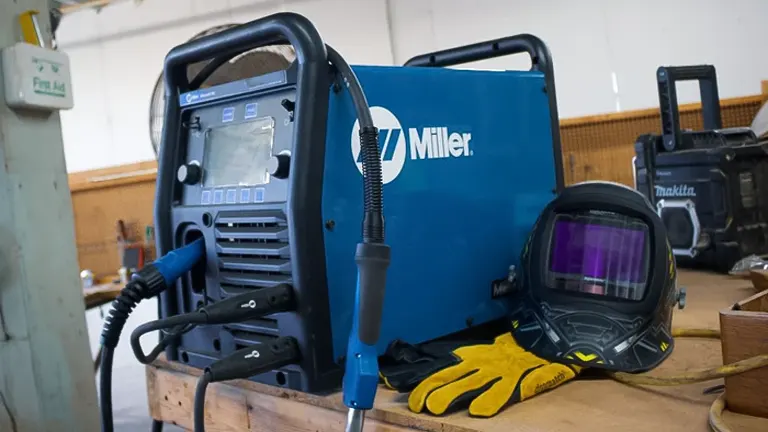
This professional-grade welder is favored by small contractors for its 7-inch color LCD screen, pre-set weld settings, and program mode, streamlining setup and enhancing efficiency. The MDX-250 MIG Gun with AccuLock ensures a secure grip and reduces fatigue during prolonged use. The pulsed MIG setting minimizes distortion and spatter when working with thin materials.
With a 4.7 out of 5 rating on Amazon from 66% of customers awarding it 5 stars, user satisfaction is evident. Positive testimonials, such as effortlessly welding 400 feet of 1/4 6061 aluminum, highlight the machine’s consistency. After nearly three years of use, I can confirm its suitability for professional applications with a high-duty cycle, enabling fast and reliable performance.
The Millermatic 255’s ability to seamlessly switch between an aluminum spool gun and a standard steel gun adds to its user-friendly design. In summary, priced reasonably for its features at $4,789, the Miller 951766 Millermatic 255 stands out as a durable and reliable high-end MIG welder, making it a worthwhile investment for professionals.
| Pros | Cons |
|---|---|
| – Versatile Functionality: Offers MIG, Pulsed MIG, and flux-core welding for diverse applications. | – High Cost: Priced at $4,789, it may be considered expensive for some users. |
| – High Performance: 60% duty cycle ensures consistent and reliable welding results. | – Weight: Weighing 84 pounds, it may be less portable compared to lighter welding machines. |
| – User-Friendly: Features a 7-inch color LCD screen, pre-set weld settings, and program mode for ease of use. | – Complexity: The range of features may be overwhelming for beginners. |
| – Positive Feedback: Boasts a high Amazon rating (4.7/5) with 66% of customers giving it 5 stars. | – Power Requirements: Requires 208V-240V, limiting use in locations with specific power constraints. |
| – Durable Construction: Weighs 84 pounds, built robustly, and comes with a three-year warranty. | – Not Beginner-Friendly: May not be the best choice for those new to welding due to its advanced features. |
4. Forney Easy Weld 140 FC-I Welder
Technical Specifications
- Functions: Flux-core welding only.
- Weight: 19 pounds
- Material Thickness: Up to 1/4 inches mild steel.
- Duty cycle: 30%
- Weldable materials: Steel, stainless steel
- Amperage range: 140 amps
- Input voltage: 120V
- Warranty: 12 months
The Forney Easy Weld 261, a compact and portable MIG welder, holds the fourth spot on my list of best welders. Released in 2018, it’s ideal for beginners and DIY enthusiasts, priced at $239.99. Despite its small size, it offers up to 140 amps and a 30% duty cycle, suitable for various tasks. Key features include flux-core welding, an 8-inch MIG gun, an 8-inch ground clamp, and a 20A – 15A adapter for added versatility.
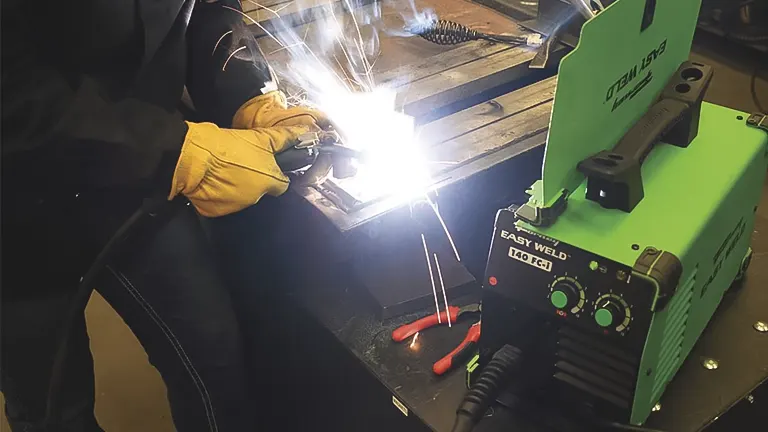
While marketed as a MIG welder, it lacks gas line support and is limited to 0.30 flux-core welding. Backed by a 12-month warranty, it boasts a 4.7 out of 5 rating on Amazon with 3,026 global reviews, highlighting its popularity. Testimonials, like Chassy’s positive experience, emphasize its user-friendly nature. Tested after 20 years of welding, it proved sturdy, easy to set up, and capable of producing high-quality welds on materials up to 1/4 inches of mild steel.
For those seeking an affordable MIG welder for side projects, the Forney Easy Weld 261 is a valuable choice, combining affordability and performance. Available on Amazon for $239.99, it’s highly recommended for welding enthusiasts of various skill levels.
| Pros | Cons |
|---|---|
| – Portability: Lightweight and portable for easy transportation and use in small spaces. | – Limited Welding Capability: Lacks gas line support, limiting its welding applications. |
| – Affordability: Priced at $239.99, making it a budget-friendly option for beginners and hobbyists. | – Not for Heavy-Duty Tasks: Less suitable for heavy-duty welding due to its smaller size and lower amperage. |
| – Versatile Features: Offers up to 140 amps, a 30% duty cycle, and includes flux-core welding capability with additional accessories. | – Flux-Core Limitation: Restricted to 0.30 flux-core welding, affecting its versatility. |
| – Positive User Feedback: Backed by a 12-month warranty, it has a high 4.7 out of 5 rating on Amazon, reflecting user satisfaction. | – Not for Professionals: Geared towards entry-level users, may not meet the advanced needs of professional welders. |
5. YESWELDER Digital MIG-205DS MIG Welder
Technical Specifications
- Functions: MIG, flux-core, Lift TIG and stick welding
- Weight: 35.5 pounds
- Material Thickness: 1/4 inch max.
- Duty cycle: 60%
- Weldable materials: Steel, stainless steel, aluminum
- Amperage range: 30-200 amps
- Input voltage: 110V and 220V
- Warranty: Three years
The YESWELDER Digital MIG-205DS MIG Welder claims the fifth spot on my top MIG welders list, providing excellent value for digital MIG welding. Ideal for hobbyists and professionals, the Yeswelder MIG-205DS supports MIG, flux core, TIG, and stick welding with a broad amperage range of 30-200 amps. It features a robust 60% duty cycle at 220A, automatic overheating protection, and dual 110V and 220V outlets for versatile power options.
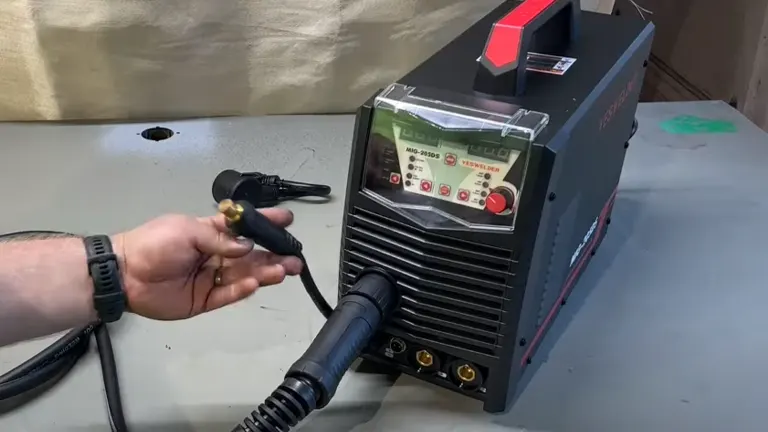
Going beyond standard capabilities, the MIG-205DS offers true lift TIG functionality and accommodates 100% argon aluminum MIG welding with a spool gun, enhancing its versatility. The synergic MIG setting simplifies the welding process for beginners, automatically adjusting the voltage and wire feeding speed based on material specifications. User testimonials, like D’s, highlight its suitability for novice welders, praising the accurate adjustments provided by the Synergic control.
Having tested the MIG-205DS, I can confirm its excellence for DIY welders. The clear interface facilitates easy material and wire size adjustments, and the Synergic mode ensures smooth, neat welds with minimal spatter.
While I didn’t test aluminum MIG welds due to the absence of a spool gun, the MIG-205DS, with the right accessories, handles both steel and aluminum welding tasks. Overall, it stands out as a comprehensive and user-friendly choice for those in search of a reliable digital MIG welder across various applications.
| Pros | Cons |
|---|---|
| – Versatility: Offers MIG, flux core, TIG, and stick welding, making it versatile for various applications. | – Limited Aluminum Welding Without Accessories: Requires additional accessories like a spool gun for out-of-the-box aluminum welding. |
| – Amperage Range: Ranges from 30-200 amps, providing flexibility for different welding tasks. | – Learning Curve for Beginners: Despite the synergic MIG setting, beginners may face a learning curve with the various welding techniques and settings. |
| – Dual Voltage Outlets: Includes both 110V and 220V outlets, offering flexibility in power sources. | – Spool Gun Not Included: Standard package lacks a spool gun, necessitating a separate purchase for aluminum welding, increasing overall cost. |
| – Synergic MIG Setting: Automatically adjusts voltage and wire feeding speed based on material specifications, simplifying the welding process, especially for beginners. | – May Lack Advanced Features: Professionals seeking highly specialized features may find the MIG-205DS lacking compared to more specialized welders. |
User-Friendly 120-Volt Power Source
The majority of welders within this category are designed to function seamlessly with standard 120-volt household outlets, alternatively labeled as 110v or 115-volt, typically accompanied by a 20-amp circuit breaker. It’s worth noting that a 30-amp circuit is required for optimal output. This compatibility with 120-volt power sources enhances the versatility of basic MIG welders, allowing for portability and ease of use, with the option to pair them with portable generators for on-the-go welded repairs in various settings.
Despite the convenience offered by the 120-volt power supply, certain limitations warrant consideration.
Limitations of Low Duty Cycles
Basic welders, characterized by a low 10-20% duty cycle, demand a consistent and reliable electrical circuit for optimal performance. At elevated heat settings, welders provide only a brief window of one or two minutes for welding within a 10-minute timeframe before the internal thermal overload is triggered.
Any shortcomings in the electrical supply further diminish the available welding time. Following an overload event, users must endure a waiting period of up to 15 minutes as the machine idles with the fan running to dissipate heat. Lowering the heat settings extends the duty cycle, but it’s crucial to recognize that welders in this class are not intended for sustained operation on larger projects. While some machines permit immediate welding after cooling down, others necessitate power cycling to reset the thermal switch.
Noteworthy details include the presence of overload indicator lamps in superior units, offering insight into the cause of the welding halt and indicating when it’s safe to resume work.
Considerations Regarding Short Cords and Clamps
Standard power cords for these welders are relatively short, typically measuring 5 1/2 or 6 feet. Some manufacturers advise against the use of extension cords for optimal performance, but if required, it’s imperative to select one that is appropriately sized for the welder and in good condition.
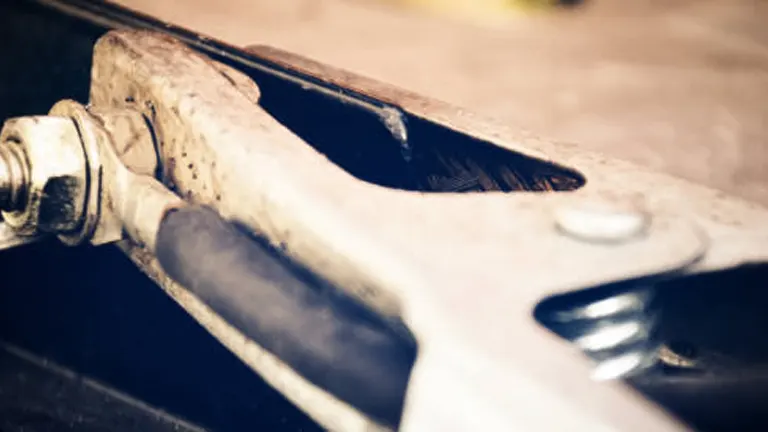
Additionally, basic MIG welders are occasionally criticized for featuring weak work clamps that struggle to establish a secure connection with the workpiece, leading to increased resistance and heat generation. Awareness of these aspects ensures a more informed approach to utilizing and maximizing the efficiency of basic MIG welders.
Challenges with Varying Metal Thickness
MIG welders operating on 120V input power typically yield an output of 90 to 125 amps. Employing .030 or .035” wire allows for welding mild steel up to 1/8 or 3/16 inches in a single pass. However, when dealing with thicker materials, multiple passes become necessary for a robust weld, although the limited duty cycles of these machines should be taken into consideration.
Navigating the intricacies of working with thin sheet metal, ranging from 18 to 24 gauge, poses a challenge, given that many MIG welders under $300 feature only 2 to 4 voltage settings. While there is a chance that one of these settings may suit the task perfectly, the absence of precise heat control can complicate the welding process. Excessive heat may result in burn-through or warping of thin materials.
Gasless Flux Core Welding Dynamics
While basic MIG machines function as arc welders, it’s crucial to note that not all of them are true MIG welders, utilizing Metal Inert Gas for shielding. Gasless welders, instead, rely on specialized flux-cored wire, with the welding heat vaporizing the flux into a shielding gas that safeguards the weld from internal contamination.
This welding method is commonly known as flux core arc welding (FCAW), gasless welding, self-shielded flux core arc welding (FCAW-S), or wire feed welding. The adoption of FCAW contributes to the mobility and user-friendliness of basic gasless welders. By eliminating the need for a hose, regulator, or a separate compressed gas cylinder, these welders become plug-and-play devices, allowing for immediate use upon connecting to an electrical outlet.
Furthermore, the absence of a high-pressure gas cylinder in flux core welding enhances transportability, enabling users to securely carry their welder kits in the trunk or back seat of a car without concerns about securing pressurized gas.
Advantages of Flux Core Welding Compared to Gas Welding
- Enhanced Outdoor Performance: Flourishes in outdoor conditions, especially with a gentle breeze.
- Improved Performance on Contaminated Surfaces: Exhibits superior performance on slightly dirty materials, such as those with light rust or grease.
- Deeper Weld Penetration: Achieves deeper weld penetration with thicker materials at the same power output.
- Higher Deposition Rate: Deposits metal onto the weld at a faster rate, contributing to efficiency.
- Ease of Use in Awkward Positions: Facilitates easier welding in challenging or awkward positions.
Limitations of Flux Cored Welding
- Aesthetics of Welds: The appearance of welds may not be as aesthetically pleasing as those produced with gas shielding. While not ideal for crafting high-end custom chopper frames, it is suitable for practical repairs like fixing a dirt bike frame or lawn equipment.
- Cleaning Requirements: Welds necessitate additional cleaning with a wire brush or grinder to eliminate spatter, which refers to molten weld material deposited outside the weld bead.
- Presence of Slag: The use of flux results in the formation of a hard coating of contaminants known as slag on the weld bead. This requires breaking up with a chipping hammer and removal with a wire brush.
- Incompatibility with Aluminum: Despite some claims by sellers and manufacturers, Flux Core Arc Welding (FCAW) is not suitable for aluminum materials. Beware of mislabeled solid aluminum wire as flux core, as true flux core aluminum wire does not exist. Additionally, the chemical properties of flux developed for aluminum can adversely affect weld quality.
Challenges with Short Cables Impacting Mobility
- Limited Cable Length: Welders in this category typically feature short welding gun (torch) and ground (work) cables, usually six feet or less. This limitation can impede free movement around the workspace.
- Need for Frequent Repositioning: Users may need to frequently reposition the workpiece or the welder itself to ensure sufficient reach during the welding process.
- Test Runs Recommended: It is advisable to conduct test runs with the welder turned off when preparing for longer welds. This helps identify potential snags or cable length issues before initiating the welding process.
Steer Clear of Inexpensive Always-Hot Guns
It’s crucial to ensure that the included gun (torch) in a welding kit adheres to a standard style, facilitating easy access to consumables and gun parts, such as replacement contact tips. For instance, consumables for Tweco-style guns are readily available.
Prioritizing the purchase of a “cold-gun” welder is essential for safety. This key feature ensures that the gun’s electrode remains unenergized until the trigger is pulled. To cut costs, many MIG welders in the lower price range are electrically active whenever the welder is on, lacking the safety measure of a relay.
This lack of safety is a significant concern that must be addressed.
Robust Wire Feed Drives
The seamless and consistent wire delivery to the gun plays a pivotal role in achieving a high-quality weld. A subpar wire drive system, often constructed from inferior materials, is a common downfall of budget-friendly welders.
Seek out wire feed systems crafted predominantly from metal materials, or entirely so. It’s important to note that while most gas-less (flux core only) welders incorporate plastic components in their feed drives, prioritizing systems with robust metal components is advisable. This ensures durability and reliability in wire delivery, contributing to the overall performance of the welder.
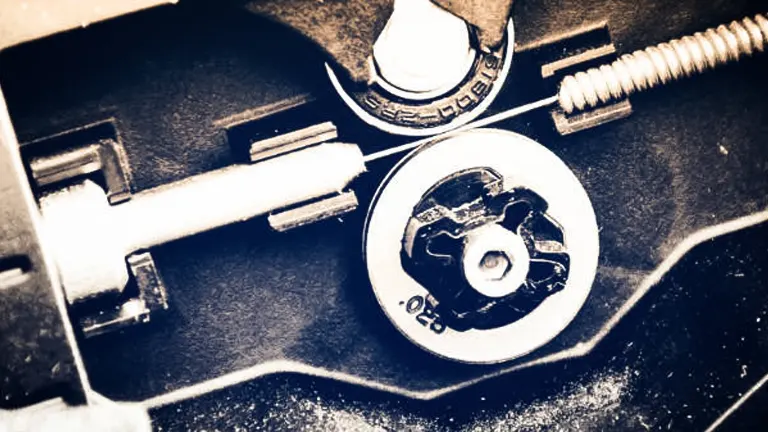
Wire Speed Control
For the best performance with a variety of materials and working conditions, the wire speed controls must allow for continuous and infinite adjustments within the machine’s available range, You’ll find this range expressed as inches per minute (IPM).
Some machines with weak power supplies allow wire speed adjustment to vary as voltage settings change. When you increase the heat setting, this extra power draw causes the wire drive motor to run slower than at the previous lower heat setting. You think you’re making a single adjustment but two variables are changing. They work against each other to make it difficult to dial in a proper weld setting.
Remember, basic welders have only a few fixed voltage (heat) settings to work with. Adjusting the wire speed (amperage) is how you’ll fine-tune the arc to get the best weld. Wire (filler material) is not specific to the brand of a welder. You’ll just need to choose a product of the correct diameter with specifications matching your particular job. A general-purpose wire works well for many hobby or art projects, and most DIY repairs.
Be Cautious of Kit Accessories
When assessing basic MIG welder kits, anticipate limited value from the accompanying accessories. While there may be exceptions, most of these items are of subpar quality and offer limited utility.
While a budget chipping hammer or wire brush might lead to disappointment, some kit masks can pose significant safety risks. A common issue with masks included in welder kits is that they are of the hand-held variety, leaving you with only one hand free to operate the welding gun. For novice or occasional welders, mastering the technique of steady one-handed welding can be challenging.
Even experienced welders prefer using both hands for better torch control. Additionally, these masks often feature a dark, fixed-shade lens, making it more challenging for beginners.
To position the gun accurately on the weld, you’ll need to move the shield away from your eyes, resulting in a moment of darkness before initiating the weld. This constant switching of the mask increases the likelihood of accidentally triggering the gun without the protective shield in place.
Directly viewing the welding arc with the naked eye, known as flashing, can lead to severe ultraviolet radiation burns to your eyes and, to a lesser extent, your skin. This risk is genuine but easily preventable.
Investing in a reliable auto-darkening helmet with an adjustable shade lens is crucial for eye protection. Not only does it enhance safety, but it also eliminates an additional concern as you embark on your welding journey. With a quality helmet, you’ll be more secure, comfortable, and likely to improve your welding skills more rapidly.
Fortunately, there are many safe and comfortable helmets available for less than $50.
Concluding Final Thoughts
In the realm of MIG welding machines, these five models represent a spectrum ranging from budget-friendly to premium, each catering to diverse welding needs. The Lincoln K4195-1 Electric POWER MIG 210 MP Welder Machine stands out as a versatile powerhouse with its multiprocess capabilities, making it suitable for a wide array of applications. The Hobart 500554 Handler 190 MIG Welder Machine impresses with its robust 230V performance, offering a perfect balance between power and ease of use. Meanwhile, the Miller 951766 Millermatic 255 MIG/Pulsed MIG Welder Machine excels in precision welding, featuring advanced pulsing technology for enhanced control.
For those on a tighter budget, the Forney Easy Weld 261-140 FC-I Welder Machine at 120V still delivers reliable performance, making it an excellent entry-level choice. Lastly, the YESWELDER Digital MIG 205DS MIG Welder Machine combines digital precision with versatility, making it a standout option for those seeking a blend of advanced features and affordability. Ultimately, the best MIG welder depends on the specific requirements and preferences of the user, but this selection provides a comprehensive overview of options spanning different price points and capabilities.
Frequently Asked Questions
- What is MIG welding, and how does it differ from other welding processes?
MIG welding, or Metal Inert Gas welding, is a process that uses a continuously fed wire electrode to join two metal pieces. It differs from other methods like TIG welding in that it is a semi-automatic process where the electrode is consumed during welding. - What are the key factors to consider when choosing a MIG welder for my needs?
Consider factors such as power requirements, duty cycle, welding thickness capabilities, and additional features like multiprocess capability or advanced controls based on your specific welding projects. - What is the significance of voltage and amperage settings in MIG welding machines?
Voltage and amperage settings determine the heat and power output of the welder. Understanding these settings is crucial for achieving the right weld penetration and avoiding issues like overheating or inadequate fusion. - Can MIG welding be used for various metals, or is it specific to certain materials?
MIG welding is versatile and can be used for various metals, including steel, stainless steel, aluminum, and more. However, the choice of gas and wire type may vary depending on the specific metal being welded. - What is the duty cycle, and how does it impact welding performance?
The duty cycle represents the amount of time a welder can operate within a specific time frame without overheating. It is expressed as a percentage. A higher duty cycle indicates a welder can work for longer periods without interruption. - Do I need additional safety equipment when using a MIG welder?
Yes, safety gear such as welding helmet, gloves, and appropriate clothing are essential. Additionally, good ventilation is crucial, as MIG welding produces fumes and gases that can be harmful when inhaled. - How do I choose the right wire size for MIG welding?
The wire size is chosen based on the thickness of the metal being welded. Thicker metals generally require larger diameter wires. Consult the welder’s manual or guidelines for recommended wire sizes. - What are the common troubleshooting issues with MIG welding, and how can they be addressed?
Common issues include poor wire feeding, uneven welds, and spatter. These can be addressed by checking and adjusting the wire feed tension, selecting the right gas and wire combination, and ensuring proper grounding. - Is it possible to weld without using gas in a MIG welder?
Yes, some MIG welder support flux-cored welding, eliminating the need for an external shielding gas. This can be advantageous in outdoor or windy conditions where gas shielding might be less effective. - How important is portability when choosing a MIG welder?
Portability depends on your specific needs. If you plan to move the welder frequently or work in different locations, a compact and lightweight design with convenient handles becomes crucial. However, for stationary workshops, portability may be less of a priority.
Your input matters! Feel free to contribute by sharing your personal experiences and thoughts on any of the Best 5 MIG Welders: Budget to Premium mentioned above. Your valuable insights can play a crucial role in assisting others to make informed decisions when selecting the ideal MIG welder for their needs. Drop your comments below and help build a community of informed welders!

Edward Smith
Forestry AuthorWoodworking is about more than crafting; it's a harmonious connection with nature, mastering tools, and preserving our environment. I'm here to share my knowledge and experiences with you, forging a future where we can embrace wood's beauty and utility while safeguarding our forests' health and diversity.

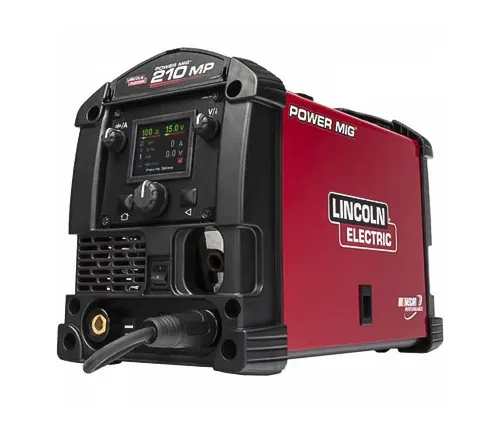
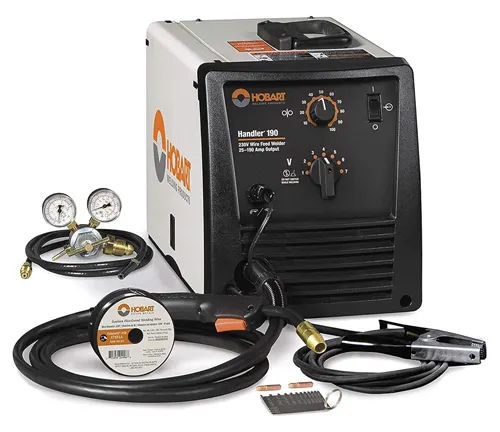
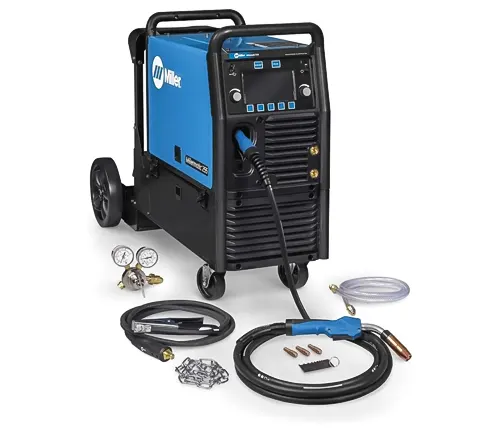

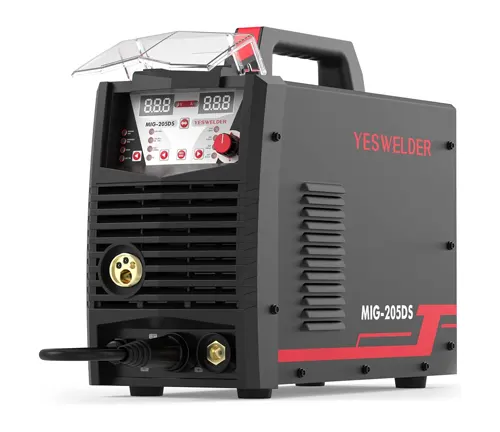





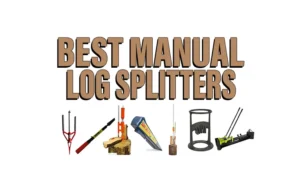


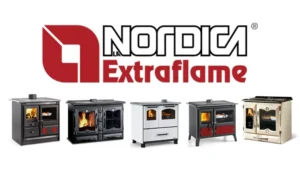
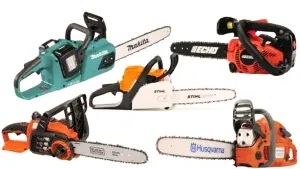


Leave your comment